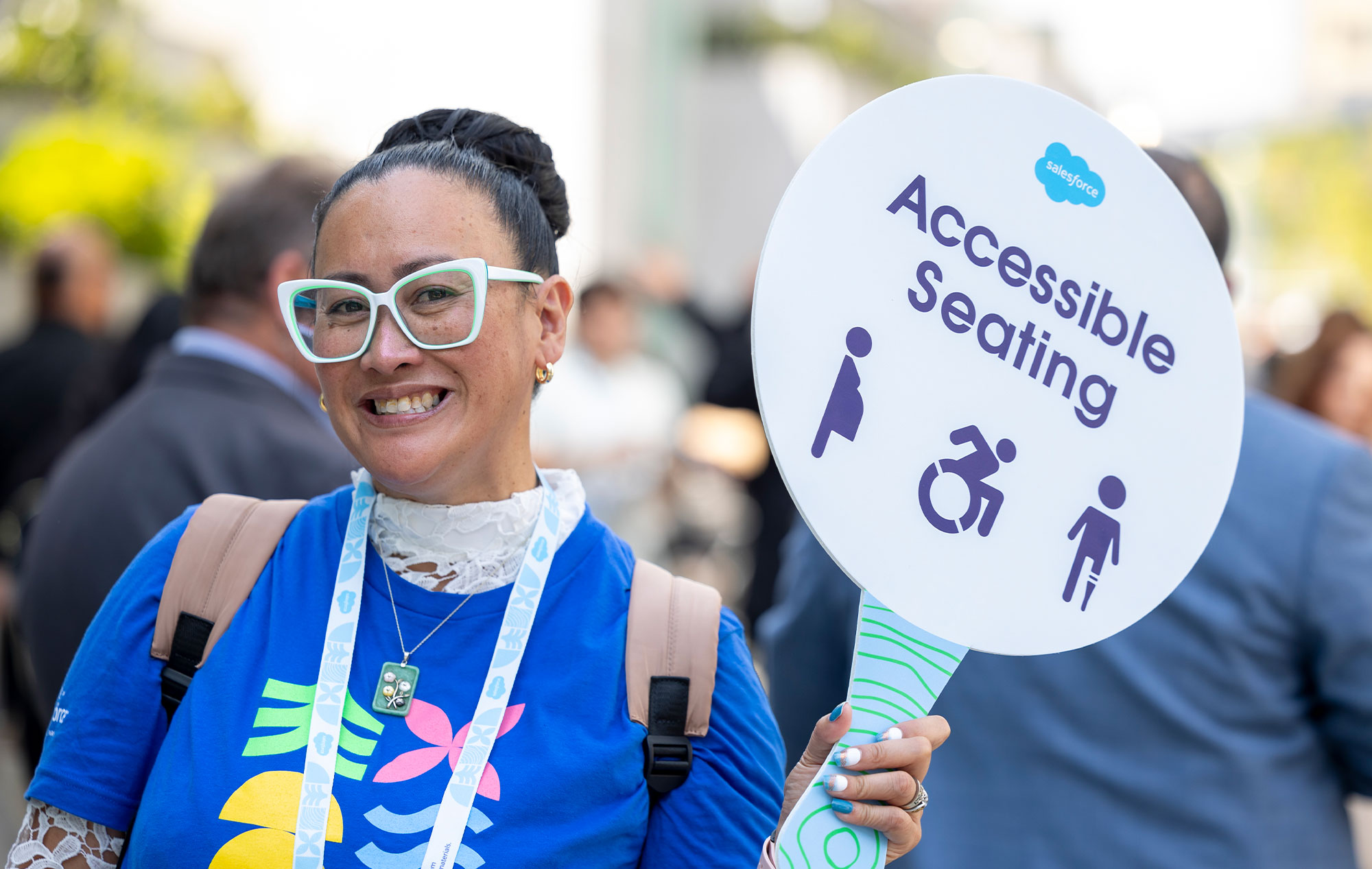Working parents are stressed. Juggling the demands of work and family can be arduous, and many parents struggle to find the right balance, leading to fatigue, guilt, and burnout.
According to the U.S. Bureau of Labor Statistics (BLS), of the 33.3 million families in the U.S. with children under age 18, 91.2 percent include at least one working parent. Sixty-five percent, or 21.6 million families, have two.
Jessica Lee, senior staff attorney at the advocacy and research organization the Center for WorkLife Law, hears every day from working parents calling the center’s helpline.
“It’s impossible for many people to navigate how to get [needed] time off from work,” she tells InclusionHub. “[They] find themselves in awful binds where they can’t protect their health or support their families. They’re being forced to choose [between work and home.]”
The situation is even worse for marginalized populations, says Sharita Gruberg, VP of Economic Justice at the nonprofit advocacy group the National Partnership for Women & Families (NPWF).
“People of color, disabled people, LGBTQ+ people, and other marginalized workers face entrenched barriers that keep them segregated in low-wage, low-benefit jobs,” Gruberg says. “This means less money to pay the bills and less access to workplace policies and protections.”
Some working parents also face the challenge of caring for aging parents or family members, adding to their caregiving responsibilities.
For other families, the cost of childcare outweighs the benefits of employment, often resulting in one parent一more commonly the mother一relinquishing external earning opportunities and career development to care for children at home.
This trend is evident in the labor force participation rate, which is the proportion of the population either employed or actively seeking employment. Among women with children aged six to 17, this rate stands at 76.7 percent, compared to 91.8 percent for men. The gap is even wider between women and men who parent children under six years, with women at 67.9 percent versus men at 94.4 percent.
Family-friendly policies and flexible work arrangements can make a meaningful difference in the lives of working parents. They’re also beneficial for organizations. Family-positive policies contribute to a more satisfied, engaged, and productive workforce, which can positively impact an organization’s bottom line and reputation. They also help companies attract and retain top talent in a competitive job market.
What Are Family-Friendly Employment Policies?
Family-friendly employment policies support family caregivers and protect them from discrimination or hardship.
In recognition that women take on more unpaid child-care tasks than their opposite-sex partners (married or not), policies and practices that empower women to make meaningful contributions and ensure their own well-being are also part of the list. The NPWF estimates women spend twice as much time as men providing unpaid care, totaling $625 billion annually.
The impact of disproportionate care responsibilities is also the largest contributor to the ongoing wage gap between gendered working parents. According to the advocacy group Equal Pay Today, full-time working mothers still only get 74 cents for every dollar a father earns一and the gap is even wider for mothers of color.
Specific policy objectives to help reverse these trends and better help working parents include advancing family support, economic parity, freedom from bias, affordable healthcare with reproductive health services, and flexible work arrangements.
The Business Case for Family-Friendly Policies
Supporting working parents with more flexible work arrangements and policies may seem costly, even counterintuitive from a business perspective. However, the research suggests otherwise. Here are just a few benefits of family-friendly policies to consider:
- Attracts & Helps Retain Stronger Talent. In its Women in the Workplace 2023 report, global management consulting firm McKinsey & Company reports men and women see flexible working conditions as a “top 3” employee benefit.
- Increases Productivity. When employees have the flexibility to work in a way that suits their needs, they are often more focused and motivated. In the aforementioned McKinsey report, 83 percent of respondents cite greater efficiency and productivity as a primary benefit of working remotely.
- Reduces Absenteeism. Employees with paid family leave or flexible scheduling options are often less likely to miss work due to family-related emergencies or caregiving responsibilities.
- Enhances Reputation. Organizations with a reputation for being family-friendly and supportive of work-life balance are more likely to be viewed positively by customers, investors, and the community.
- Improves Morale and Job Satisfaction. Employees who feel their employer cares about their well-being and family needs tend to have higher job satisfaction and morale. This can lead to a more positive workplace culture.
- Aligns with Compliance and Legal Obligations. Federal or state laws may require employers to adopt selected family-friendly policies, and non-compliance can lead to legal issues and penalties.
In short, while implementing family-friendly policies may require an initial investment, they can lead to cost savings in the long run. Reduced turnover, increased productivity, and improved employee retention can contribute to a more efficient and profitable operation.
Existing Family-Friendly Federal & State Policies
While significant room exists for expanding family-friendly legislation, current federal and state laws can help support working parents in several ways. A few of the primary statutes are summarized below. (A more comprehensive list is provided at the end of this post.)
Federal Legislation
Family and Medical Leave Act (FMLA). Passed in 1993, the FMLA allows eligible employees to take up to 12 weeks of unpaid leave annually for family or medical reasons while protecting their job security and health benefits. However, it only applies to employers with 50 or more employees, leaving many businesses exempt. Its unpaid nature also limits its utility for many workers.
Pregnancy Discrimination Act (PDA). As part of the Civil Rights Act of 1964, the PDA forbids discrimination based on pregnancy, intentions to become pregnant, pregnancy loss, childbirth, breast/chest feeding, and related medical conditions.
Pregnant Workers Fairness Act (PWFA). This Act mandates that employers with 15 or more employees provide reasonable accommodations for limitations related to pregnancy, childbirth, or related health issues, as long as they don't cause undue hardship to the employer.
Patient Protection and Affordable Care Act (ACA). Enacted in 2010, the ACA amended the Fair Labor Standards Act to require employers to offer nursing mothers reasonable break time and a private space to express breast milk after childbirth.
Providing Urgent Maternal Protections (PUMP) for Nursing Mothers Act (PUMP Act). The PUMP Act extends rights of nursing mothers to receive break time to pump and a private place at work to pump beyond those included in the ACA referenced above.
State & City Legislation
States such as California, New York, Massachusetts, and Washington have implemented paid family leave and medical leave programs, offering partial wage replacement.
Additionally, California and Oregon, among others, have laws promoting flexible work arrangements. For example, Oregon's Fair Work Week Act focuses on predictive scheduling in certain industries.
What Else Employers Can Do to Support Working Parents
Aside from adhering to federal and state-mandated policies, employers can better support working parents using the following approaches:
Include Paid Family, Medical & Sick Leave in Your Benefits Program
As discussed previously, paid family and medical leave enables parents to focus on their families or themselves without worrying about lost income. Allowing parents to address short-term needs with paid sick leave is equally important.
In the case of pregnancy, leave should also be extended to the non-birthing parent. Citing McKinsey data, Forbes reports that when men take leave for their female partners’ childbirth, it can help close pay gaps from uneven parental leave use.
Implement Flexible Work Policies & Outcome-Based Work
While not a novel solution, it remains one of the most effective. Providing working parents more flexibility on when, where, and how much they work helps reduce child-care costs and better balance professional and parental obligations.
“One of the biggest challenges is accessing time off when welcoming a child into the home or dealing with medical issues related to parenting,” says Lee.
Additionally, focusing more on work outcomes rather than time at the desk or processes completed can also help facilitate the development and adoption of flexible work policies.
Offer Child & Senior Care Subsidies
According to a national online care resource Care.com study, the average annual cost of at-home child care is a staggering $28,354 or $9,589 at a child-care center.
To help alleviate this burden, employers can provide subsidies or financial assistance for child and senior care expenses. This can include on-site daycare, partnerships with care facilities, or reimbursement for qualified expenses.
Provide Financial Literacy & Planning Tools
Expanding access to financial literacy and planning tools can help parents budget, save, and manage expenses, even college tuition. For example, employee assistance programs (EAPs) or external financial advisors can help educate employees to make more informed decisions and reduce financial stress.
Require Bias Training
Biases tend to be deeply ingrained in societal norms, cultural practices, and individual perceptions, often influencing behaviors and decisions unconsciously. Instituting bias training helps employees and employers recognize and address unconscious biases, leading to more equitable decision-making processes and interactions.
Additionally, recruitment and performance evaluation policies should be family-responsive in ways that don't single out parents in negative ways.
Build a Culture of Support & Understanding
In a healthy workplace culture, everyone feels safe, supported, and seen. But this takes a conscious and concerted effort and can easily be undermined.
“Even companies that do the right thing when it comes to parental leave can have unrealistic expectations for new parent employees once they return,” says Lee.
Despite having to manage the additional responsibilities of parenthood, “employees often find their employers act as if nothing has changed,” she adds.
Creating a workplace community where parents can access needed flexibility, share information and concerns authentically, and build support networks can make them feel better understood and valued.
Empowering Working Parents for a Less Stressful & Productive Future
In an era where most U.S. families with children have working parents, adopting family-friendly policies and flexible work arrangements is essential.
“I can’t overstate how important it is for parents to be able to take the time off that they need, be able to afford that time off, and then return to their careers,” explains Lee.
These measures are vital not only for employee well-being but also for organizational success grounded in a productive, satisfied, and loyal workforce. Such policies also support women who disproportionately shoulder childcare responsibilities and are crucial for closing the wage gap and promoting gender equity.
The business benefits are manifold: attracting and retaining top talent, increasing productivity, reducing absenteeism, enhancing reputation, improving morale, and ensuring legal compliance.
By creating a supportive workplace culture, businesses can cultivate an environment where working parents and the organization thrive, paving the way for a more equitable, less stressed, and productive society.
InclusionHub is an online, crowd-sourced resource directory dedicated to raising awareness about and improving gender equality, accessibility, DEIB, and other important social issues. To learn more about or join in this extraordinary pursuit, contact us today.
Additional Resources
This organization advocates for policies that support women and families, including paid family and medical leave, affordable childcare, and protection against pregnancy discrimination.
This U.S.-based organization focuses on advancing workplace policies and practices that support caregivers, including working parents, through research, legal advocacy, and education. See Laws Protecting Family Caregivers at Work for a comprehensive list of federal and state laws supporting working parents.
This nonprofit research organization conducts research and offers solutions for workplaces to support the needs of employees, including working parents.
National Partnership for Women & Families
This U.S. organization advocates for policies such as paid family and medical leave, paid sick days, and equal pay, with a focus on improving the lives of working parents.






Leave a Comment